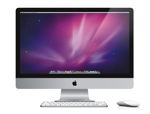WE WELCOME YOU TO THE COMPUTER APPRECIATION CLASS PART 4
We will like to appreciate our online instructors Alex Duin a freelance writer, specialising in technology and Chinonso Nwakaeme an IT expect for making this class possible.
We shall focus on "HOW TO CHOOSE YOUR COMPUTER"
You can find several styles of computers in the market, and you may be wondering how you’ll ever choose which one to buy. Some computers, such as laptops, are small and portable. Other computers use different operating systems, such as Windows and Macintosh, to make everything run.
Consider the following features when choosing the type of computer you should buy:
Follow these step-by-step instructions on how to choose a computer
Step 1: Work out whether you want a desktop computer or a laptop.
If you’ll be using it in one place, a desktop will be cheaper and
easier to modify, but laptops have the obvious benefits of mobility and
smaller size.
Step 2: Decide whether you want a PC or a Mac. There are some obvious and some subtle differences between them But in general, PCs are harder to use but are cheaper and have more
software, and Macs are easier to operate but are more expensive and less
software has been created for them.
Step 3: Probably the most important step of all: figure out how much money
you’re willing to spend. Computers vary hugely in price and it’s easy
to spend far more than you intend. You want to get as powerful a
computer as possible for your cash, but you probably don’t want to go
overboard.
 An Apple iMac (left)
ranges in price from £899 to £1,999, depending on how powerful you want
it to be and how big a screen you prefer. But an iMac is an ‘all in
one’ – that is, it’s a computer and screen combined, so you don’t have
to pay separately for the latter.
An Apple iMac (left)
ranges in price from £899 to £1,999, depending on how powerful you want
it to be and how big a screen you prefer. But an iMac is an ‘all in
one’ – that is, it’s a computer and screen combined, so you don’t have
to pay separately for the latter.
Step 4: Do you need to buy a screen?
Also known as ‘monitors’, these can cost almost as much as a PC itself,
so if you’ve already got a reasonable one, you might want to save money
by sticking with it. Watch out, though – older monitors may not have
the modern connectors that newer computers use.
If you do decide to get a screen, buy as big a one as you can
afford – the difference in your productivity and the sheer enjoyment
you’ll get just using your computer will make it worth your while.
Step 5: Decide how powerful a
computer you need. If you’re planning on using it only for word
processing and browsing the web, you can probably get by with a
relatively less powerful machine. But if you’re doing some fancy image
or video manipulation or want to play the latest games at their best,
you’ll need a computer with a lot more heft. More power costs more
money, but remember: the more powerful a computer is, the longer it will
last before it needs to be replaced.
Step 6: You’ll have to settle on how big a hard drive you need. Hard drives are where the information on your computer is
stored, and the more information you have, the bigger you’ll want to
your hard drive to be.
Step 7: Choose operating system you want:
Windows is probably the most common computer operating system.
However, Macintosh computers from Apple are also popular. Macintosh
computers use Apple-specific software. However, many software
applications written for Windows are also available for the Macintosh,
and you can also set up your Mac to run the Windows operating system,
which gives you the best of both worlds.Some computers run on a freely available operating system called Linux, which has similar functionality to Windows.\
You will also know more about this when you get our book on "KNOW YOUR COMPUTER" written by Chinonso Nwakaeme
I hope you have learnt alot in this tutorial. For more details and free consultancy contact the INFO LINKS COMPUTER INSTITUTE on 07033539930.
THANKS FOR READING




No comments:
Post a Comment